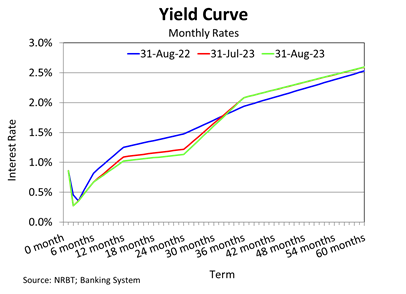Funds received for household construction contribute to the rise in remittances
- Details
- Category: Economic Release
- Created: 15 July 2016
Remittances
April 2016
| * TOP $m |
Apr 16 | Mar 16 |
Feb 16 |
Jan 16 |
| Remittance Receipts |
20.38 | 19.40 | 18.55 | 17.30 |
| Private Transfers |
17.94 | 17.78 | 16.91 | 16.01 |
| Employee Compensation |
1.75 | 1.52 | 1.48 | 1.23 |
| Private Capital Transfer | 0.62 | 0.03 | 0.10 | 0.02 |
| Social Benefits | 0.07 | 0.08 | 0.06 | 0.04 |
| * Month-ended |
||||
Funds received for household construction contribute to the rise in remittances
Remittances received remain high over the month of April 2016 with an increase of 5% ($1.0 million) to $20.4 million, representing 34% of total overseas exchange transaction (OET) receipts for the month. The rise is comprised of a $0.6 million increase in transfers received by individuals for private household constructions over the month. On year ended terms, remittance receipts were 23.8% (47.3 million) higher than it was a year ago, reaching an annual high record of $246.5 million.
Remittance received in Japanese YEN (JPY) increased the most by $0.6 million, followed by the New Zealand dollar (NZD) and US Dollar (USD) by $0.3 million respectively whereas remittance receipts in Australian dollar (AUD), EURO (EUR) and Chinese Yuan (CNY) declined. Contributing to the rise was a strengthening of the YEN and NZD against the Tongan Pa’anga (TOP). Majority of the funds received in JPY were for private house construction. USD denominated remittances still dominates over other currencies, accounting for 39% ($8.0 million) of total remittance receipts over the month, followed by AUD with 33% ($6.7 million) and the NZD with 21% ($4.3 million).
Foreign Exchange Dealers (FEDs) remains the preferred channel for the receipt of remittances, with 88% ($18.0 million) of the total remittances were transferred through the FEDs in April 2016, compared with 89% ($17.2 million) in the previous month, and 85% ($13.8 million) in the same month of last year.
Private Transfers
Private transfers which are mostly personal receipts, is still the largest component of foreign currency inflow, representing 88% of total remittance receipts and 31% of the total OET receipts by the end of April. Over the month it rose by 1% ($0.2 million) to $17.9 million, contributing to the rise in total remittances. Private transfers received in USD and AUD continue to increase whilst NZD slightly fell by 1.4% ($0.05 million). This reflects the improvement in Australia’s GDP growth and the rise in employment data in the United States during March and April.
Employee Compensation1
Compensation of employees rose by $0.2 million over the month to $1.8 million. Driving this rise were the receipts from the Recognised Seasonal Employer Scheme (RSE) workers overseas increasing by $0.3 million, which more than offset a $0.08 million decline in receipts from other local experts serving foreign organisations. Over the year, employee compensation reached a total of $17.5 million, of which $7.4 million are receipts from RSEs and the remaining $10.1million was from compensation received by Tongan workers who are employed in foreign organizations abroad.
Private capital transfer & Social Benefits
Private grants for capital expenditures such as acquisition or construction of fixed assets rose from $0.03 million in March to $0.6 million in April contributing to the overall rise in remittance receipts. These were mostly funds received by private household from family overseas for private household constructions. Social benefits such as pensions received by individuals slightly fell by $0.01 million to $0.07 million over the month. Private capital transfers and social benefits represent only 3% of the total remittance receipts.
Outlook
Remittance receipts are anticipated to remain at high levels in the upcoming months as it approaches the special Sundays in May, followed by the church conferences and other celebration such as school’s anniversaries later on. The NRBT will continue to closely monitor the remittance receipts given it is the largest source of foreign exchange inflow to the economy as well as the positive social safety net effect and the additional income it provides to households.
1 - Employee compensation is the sum of wages and salaries from the Recognised Seasonal Employer (RSE) program and other Tongan residents working short term overseas.
Download the full report: Remittances Report - April 2016

